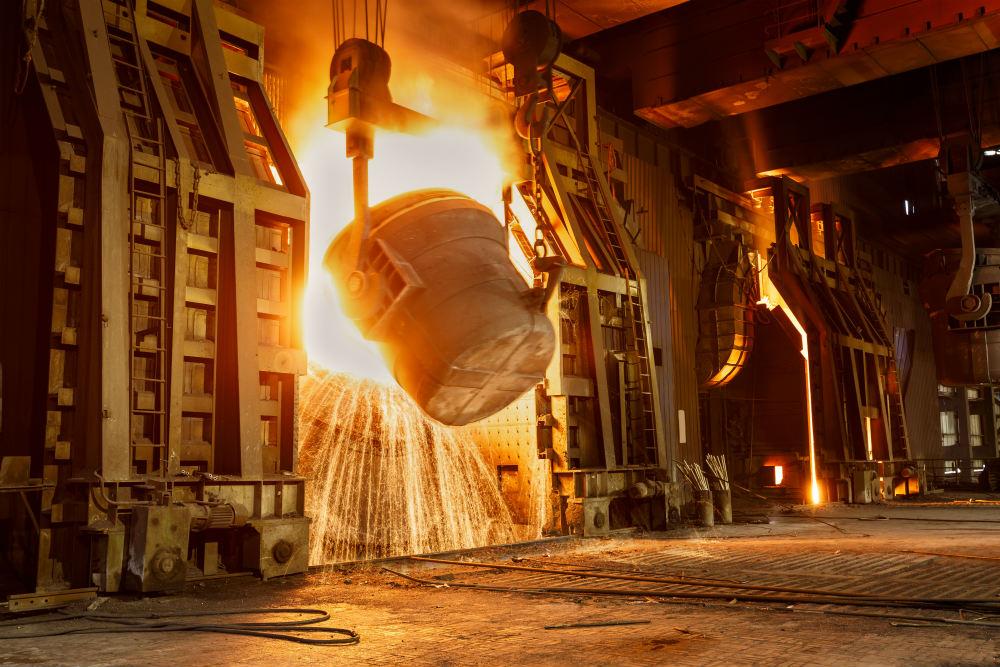Pathways clear for decarbonising heavy industry

The production of green steel will be a critical step to enable the world’s heavy industry to reduce its greenhouse gas emissions and Australia is well placed to be an important player in this space.
In the HiTemp Outlook #2 Report researchers from the University of Adelaide’s Centre for Energy Technology (CET), in collaboration with some of the world’s leading energy experts, have identified some of the most prospective pathways for heavy industry to reduce its carbon dioxide emissions.
“We are developing affordable ways to produce materials, such as steel, cement and aluminium, using greener sources of energy,” says Professor Gus Nathan, who is the Director of the Centre for Energy Technology and the Deputy Director of the Institute for Mineral and Energy Resources at the University of Adelaide.
“The production of these materials is energy-intensive and their greenhouse gas emissions are hard to abate. However, new technologies are now emerging to enable them to be manufactured using renewable energy sources rather than fossil fuels. This will significantly reduce their impact on the environment.
“If Australia invests to build the necessary renewable electricity and hydrogen supply chains, we can become key players in the low-carbon transition and the new economy.” Professor Gus Nathan.
“Consumer demand for green products is generating the new market premiums that are beginning to drive the investment needed to decarbonise the sector.
“Europe has already committed to net-zero greenhouse gas emissions by 2050 and is beginning to introduce a Carbon Border Tax on carbon-intensive products. China and the UK have comparable targets and approaches.”
Officially launched today 12 April, the HiTeMP Outlook #2 Report was published by the University of Adelaide following the second HiTemp Forum, a world-leading think tank, which engaged international specialists from industry, research, government, and community to chart the path for heavy industrial sector to a new, low-net-carbon future.
“South Australia is leading the way when it comes to transitioning to a clean, modern energy system,” says SA Minister for Energy and Mining, Dan van Holst Pellekaan.
“The South Australian Government is focused on advancing industrial-scale production of green hydrogen as key to exporting low-carbon commodities and developing a green hydrogen international export industry.”
“Just as HiTeMP-2 is up for the challenge in charting a pathway forward towards carbon neutrality, the South Australian Government is proud to lend support to ongoing initiatives that will help South Australia to grow climate smart and low emission industries, create new jobs and attract additional investment, particularly to regional areas.
“The scale of the task is immense but through collaboration, industry, research partners and government can advance breakthrough technologies needed to strengthen Australia’s heavy industries and its transformation to operate successfully in a future low-carbon economy.”
There are opportunities to transition the iron/steel, alumina/aluminium and cement/lime industries – major contributors to industrial greenhouse gas emissions – to use green hydrogen, green electricity and solar thermal energy for heat instead of fossil fuels.
“If Australia invests to build the necessary renewable electricity and hydrogen supply chains, we can become key players in the low-carbon transition and the new economy,” says Professor Nathan.
“The aim is to transition the heavy industrial sector so that it will supply products using green energy, and to add value to our ore exports through emerging markets for green products.”
Today 99.5 per cent of Australia’s iron ore is exported unprocessed.
“Imagine the benefit of turning even a decent slice of these exports into products worth three or four times the value of the raw ore,” says Professor Nathan.
“The low-carbon economy offers us the chance to transform our heavy industry with new technology. Large investments will be needed to tailor the technologies to Australian ores and conditions, and then to establish the plants for these low-carbon products as the global demand grows.
“Green hydrogen – hydrogen produced from renewable energy – is the most plausible long-term route to produce ‘green’ steel but it is not yet available at sufficient scale or sufficiently low cost, so that blue hydrogen will also be needed.
“Because hydrogen is also relatively expensive to store and transport, it is desirable to produce and use it at the same place as the ores. By co-locating hydrogen, mining and iron-production facilities, a two-to-four-fold cost advantage should be achievable relative to shipping both the ore and the hydrogen. Shipping iron products is also some 20% cheaper than shipping raw iron ore.”
Some 9,100 petajoules of green electricity – 10 times the electricity produced in Australia currently or 60 times the wind and solar power produced – would be needed to convert all of Australia’s iron ores into green products, such as iron pellets, from renewable electricity.
“Australia has a major advantage of access to sources for both green and blue hydrogen. In addition to solar and wind, it has plentiful natural gas reserves that can be exploited to produce hydrogen at scale using already commercialised processes,” says Professor Nathan.
“We identified that there are many synergies between iron, steel and the other high-temperature industrial processes, such as cement, lime and alumina.
“Transitioning heavy industry as a whole to a decarbonised future, as identified in the HiTemp Outlook #2 Report, will be cheaper than tackling one industry at a time. This is because many technologies and challenges are of a common interest across these seemingly different industries.”
Media Contacts:
Professor Graham Nathan, Director, Centre for Energy Technology, University of Adelaide. Mobile: +61 (0)410 477 411, Email: graham.nathan@adelaide.edu.au
Crispin Savage, Senior Communications and Media Officer, The University of Adelaide. Mobile: +61 (0)481 912 465, Email: crispin.savage@adelaide.edu.au
